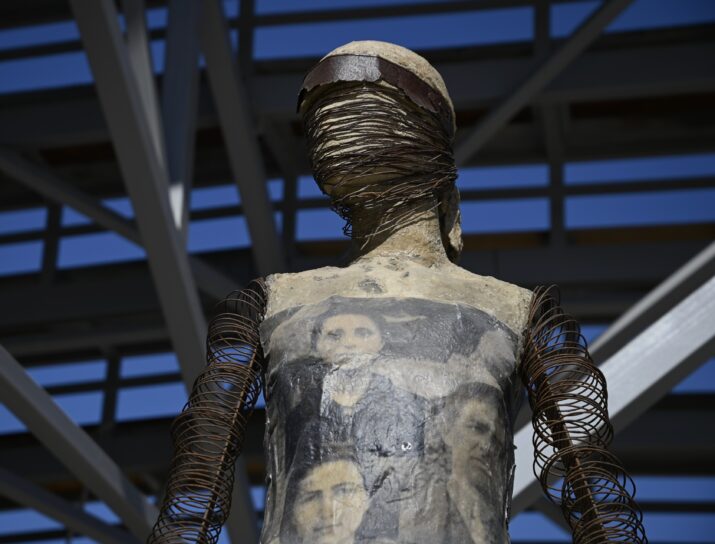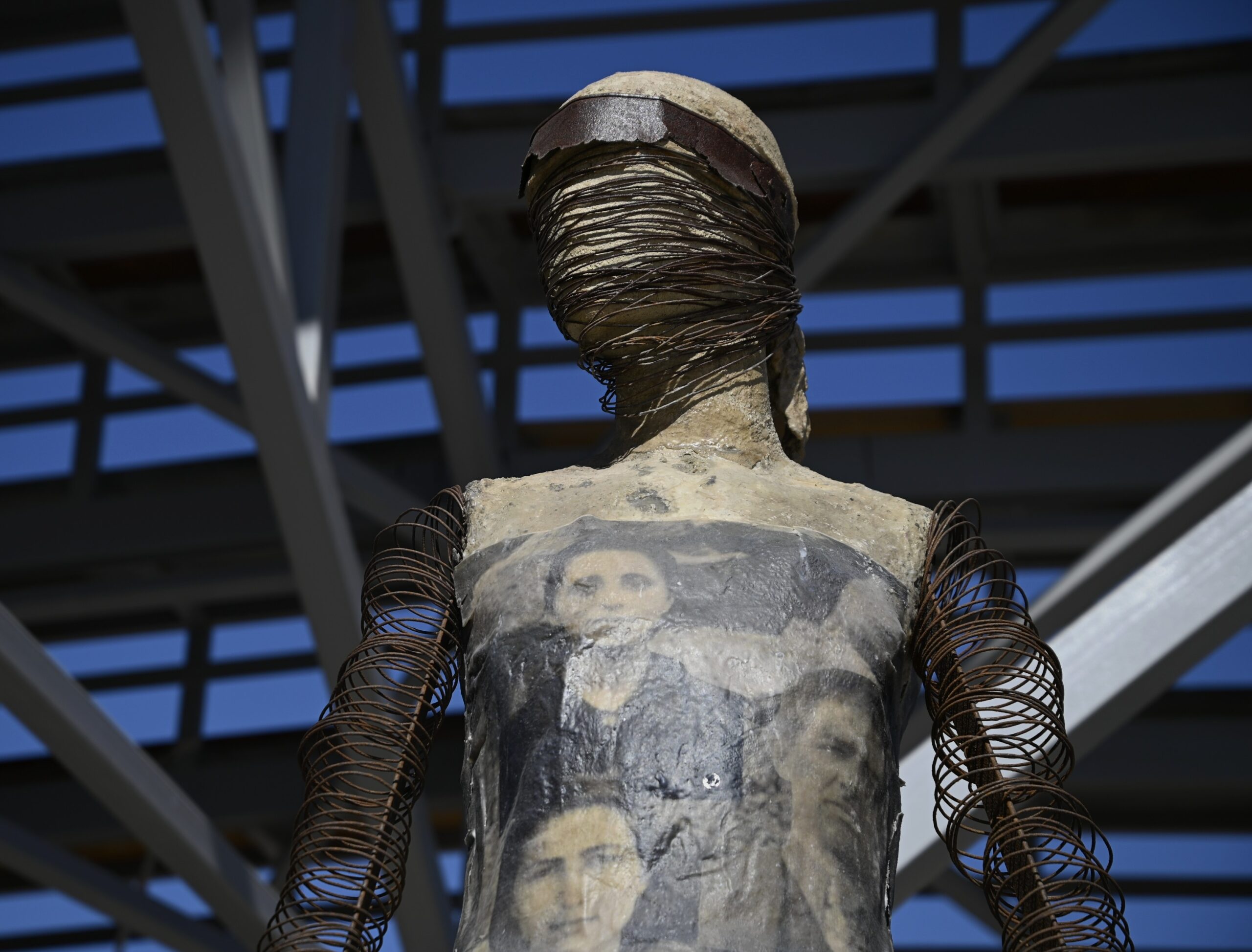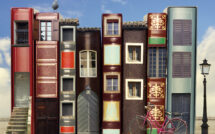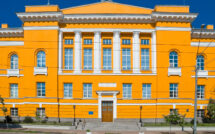

This is part of a Roundtable on The European Capitals of Europe.
Through an evaluation of a workshop entitled “Mystery 57: Reviewing the Elefsinian Landscapes” that was organized around the successful candidacy of Eleusis (Elefsina in modern Greek) to the European Capitals of Culture program in 2023, this article addresses how this EU “Action” has engaged the urban question and what the implications for the city are. The workshop was organized by a group of university students and local activists to reveal how the layers of local urban life evolved over time and showcase the “cultural mosaic” that Elefsina represents today. This mosaic has been based on tolerance and solidarity and relied on people’s confidence in their culture, in its diachronic and modern aspects, as a vehicle for the future development of their city.
The “Mysteries of Transition” workshop
The workshop was part of the artistic program “Mysteries of Transition,” an itinerant urban planning workshop that took place in Elefsina in June 2022. It was curated by the renowned French architect and urban planner, Patrick Bouchain, who was accompanied by a group of architects and town planners with strong ties to Greece—for example, Dimitra Kanellopoulou, who acted as a coordinator for the group’s activities. Artists, scientists, and inhabitants participated in the workshop to highlight the city’s ancient and modern industrial heritage. I personally participated in the open discussion that followed, in my capacity as a member of the EU’s ECoC Pool of Experts and upon the invitation by the Eleusis2023 officials who organized the event.
The workshop aimed at creating the prerequisites for a model of cooperation between Greek and French authorities, combining the performing arts—such as acrobatics, dancing, and Mediterranean music—with discussions about the regeneration of the city’s abandoned industrial sites. The participants were architects, urban planners, artists, researchers, and citizens interested in the public sphere and urban design. The activities were implemented in the context of a French program—“La Preuve par 7”—which had gathered the support of the French Ministry of Culture, as well as the Fondation de France, an independent administrative agency established by the French government to foster private philanthropy and private foundations in France.
The point of departure of the workshop was the overall social and spatial organization of Elfesina, and the main assumption was that the city has embraced many cultural groups that have come there from various places within and without the borders of modern Greece and across different time periods. Participants identified two distinct moments influencing the life of the city today:
- The influx of refugees after the so-called “Asia Minor Catastrophe” (in 1922, the victorious Turkish army massacred the Greek population in Smyrna and set the city on fire, forcing people to flee) and
- The equally intense influx of laborers that started in the 1950s in the context of industrialization, causing a decline in the economy’s primary sector and triggering internal migration flows.
As a result of these two moments in its history, Elfesina has become a “social mosaic,” where different communities have dispersed throughout various neighborhoods and retained their own cultures. Today, this specific anthropo-geography constitutes a great competitive advantage for Elfesina and was influential in its bid to become a European Capital of Culture, title the city received for the year 2021 (postponed to 2023 because of the pandemic).
The group involved in the workshop conducted research on “Μicrasiatica,” “Pontiaca,” and “Puntus Euxinus,” three areas where refugees from Asia Minor have settled over the years. Citizens directly participated and questionnaires were submitted to the population, which led to several important findings about the city’s past that are relevant to its present and future. The first finding was that although the researched areas were isolated from the center of the city, a remarkable level of social inclusion and solidarity was present in people’s everyday lives. Indeed, mechanisms such as informal contacts and mutual support had been in place, strengthening social bonds among neighbors and reinforcing social networks across the city. A second finding was related to the way in which refugee housing has evolved. At first, these dwellings were erected illegally. They usually consisted of one room on a small plot with no access to utilities such as sewage system or electricity. When these areas were integrated into the city’s urban plan, refugees gained access to public amenities, a process that has been accompanied by the institutionalization of new building laws and regulations, allowing for the restoration of one-room dwellings as well as their extension in size or height. The fact that Elfesina was selected as an ECoC gave the city the unique opportunity to upgrade its urban infrastructure through cultural and public projects and to grant a second life to abandoned buildings and complexes. City officials generally chose to restore old industrial buildings, regenerate isolated urban neighborhoods, and upgrade many of the city’s public spaces (streets, squares, and parks).
Eleusis2023: architectural and urban interventions
I spoke with Athanasios Mavrogiannis, Deputy Mayor of Elefsina. He explains that city officials decided to recuperate four emblematic and unused building complexes to showcase the twentieth-century industrial and cultural heritage of the city. They also attempted to make the most out of the city’s open public spaces. More precisely, they prepared a long-term program aiming at making an industrial city into a service city.
We strive to make the city attractive to residents and visitors alike, where the emphasis is on history and culture. To fulfill this objective, we have undertaken several initiatives and commenced a series of urban interventions and cultural infrastructure projects that in the long run we hope will bring fruitful results. For example, we have recently completed the reconstruction of an emblematic building that had been abandoned. We selected the old Town Hall for preservation; since its renovation, it has already hosted the European Capital of Culture headquarters. Another building of great significance is the New Archaeological Museum, located near the city’s Archaeological site. It is located inside a building that was formerly industrial complex, the Elaeourgiki factory.
Furthermore, and thanks to a private donation, existing buildings were renovated to be used during the ECoC year. There were plans for the restoration and re-use of the IRIS industrial complex, an old 1920s factory producing varnishes and colorants. The site had been abandoned since the 1970s; today, it has been transformed into a multi-purpose cultural complex. The Old Olive Oil Mill (Old Elaeourgeion), which hosts the Aeschylean festival, has been restored as well and intensely used for the Eleusis2023 program. Former storage facilities owned by the Hellenic Public Properties Enterprise and the Cine Elefsis—a cinema in Upper Elefsina that was out of use since the 1990s—are also being restored and reused, while works have started in the old Kronos factory, which used to produce spirits and wine. This latter venue will host cultural and artistic projects.
In his conversation with me, Mavrogiannis describes how the municipality took advantage of the coming into force of a new development plan that integrated most of the former illegal refugee housing. This integration allowed officials to plan for the necessary infrastructures in these deprived areas and to link them to the city’s legal structure. For example, several parks and squares were upgraded. He unfolds the municipality’s strategy in the elaboration and implementation of different projects in compliance with national and EU law on questions concerning equity, transparency, the rule of law, and environmental guidelines. According to Mavrogiannis,
Elefsina features an archaeological site at its center and a rich industrial heritage along its coastal line; these are unique elements that could potentially function as axes for the city to function as a cultural pole for Southern Europe. The urban and architectural projects that are planned for the 2023 event are expected to have a positive impact on the whole city, for example on the coast, the archaeological site, the IRIS factory, the old Elaeourgiki building, the Old Olive Oil Mill, the New Museum, and the Kronos factory. Together, these sites will soon constitute a new upgraded coastal front in the city.
Furthermore, the use of existing industrial complexes along the coast for cultural purposes, the upgrading of the seafront, and the concession of the former port installations to the municipal authority have reconnected the city with the sea. A new coastal zone has been created in line with contemporary European urban norms. These projects have cost an estimated 20 million euros. Mavroyiannis argues that “these architectural and urban projects will constitute the main legacy of the ECoC year and the city will benefit from them in the long run. We will continue to elaborate on the Eleusis2023 vision within the contemporary European context.”
Urban public space and urban spatial identity
In the framework of the workshop “Mysteries of Transition,” I proposed a set of concepts and methods to approach the city as having a unique spatial entity with distinct qualitative properties. I suggested to further emphasize the concept of “urban public space” as a canvas to foster strong social bonds among the various neighborhoods in the city. This latter concept has become central in urban design in repairing the harms caused by modernism and the historical separation of architecture from urban planning. Public space embodies the social qualities of a city—such as sociability and solidarity—as well as its urban identity. These qualities, along with Europeanness, are central to the ECoC Action in sustaining a city’s spatial structure, as are walkability, sustainability, and urban memory. I also highlighted that Elfesina’s public spaces could and should be analyzed as a spatial system in seeking holistic solutions. In this respect, digital technology and specific software could provide support. I conducted a space syntax analysis[1] in four ECoCs (Athens, Glasgow, Lisbon, and Thessaloniki) to show that urban structures can be analyzed in their entirety, regardless of size. Using this type of analysis, I developed the concept of “urban spatial identity,” which I define as encompassing the qualitative properties of an urban system that are embodied in a city’s public space network based on social interactions among citizens.[2] Finally, the concept of urban spatial identity led me to develop that of “Eurocal spatial identity,” which reveals how European and local spatial identities interrelate, in the same way that local and European cultures interrelate. This interconnection between the “European” and the “local” lies at the heart of the ECoC project, although it has not been explicitly stated in the supporting texts. Indeed, urban spaces reflect societies, and in turn societies are (re)molded by urban spaces.
Municipal authorities in Elefsina could foster the undertaking of relevant research that connects the city’s cultural and artistic program with its public space structure, which would help in conducting its ex-post evaluation and assessing the legacy of the ECoC program. Such research would provide city officials and residents with the ability to better understand the unique socio-spatial character of Elefsina in a holistic and inclusive manner. Furthermore, such an approach could successfully integrate future urban or architectural interventions to confront various contradictions that might emerge in the socio-spatial development of the city.
Anastasia Paparis, Dipl., MSc, M. Phil., PhD, is an architect, town planner, and urban designer with a rich academic teaching, research, and design portfolio. Her PhD dissertation focused on The Identity of the European City through the Institution of Cultural Capitals of Europe. Her research interests cover a broad range of themes with a focus on cultural infrastructure and urban spatial identity in Europe. She is a member of the Pool of Experts for the ECoC (European Union).
References
[1] Bill Hillier and Julienne Hanson. 1984. The Social Logic of Space. Cambridge: Cambridge University Press.
[2] Anastasia Paparis. 2011. The Identity of the European City through the institution of Cultural Capital of Europe. PhD thesis (in Greek), Aristotle University of Thessaloniki, Faculty of Engineering, Department of Architecture. https://phdtheses.ekt.gr/eadd/handle/10442/27192
Photo Shutterstock | February 19, 2023. “People in Time”: The sculptural installation of Aspasia Stavropoulou hosted in the forecourt of the iconic Old Mill, Eleusis Greece.
Published on July 12, 2023.




